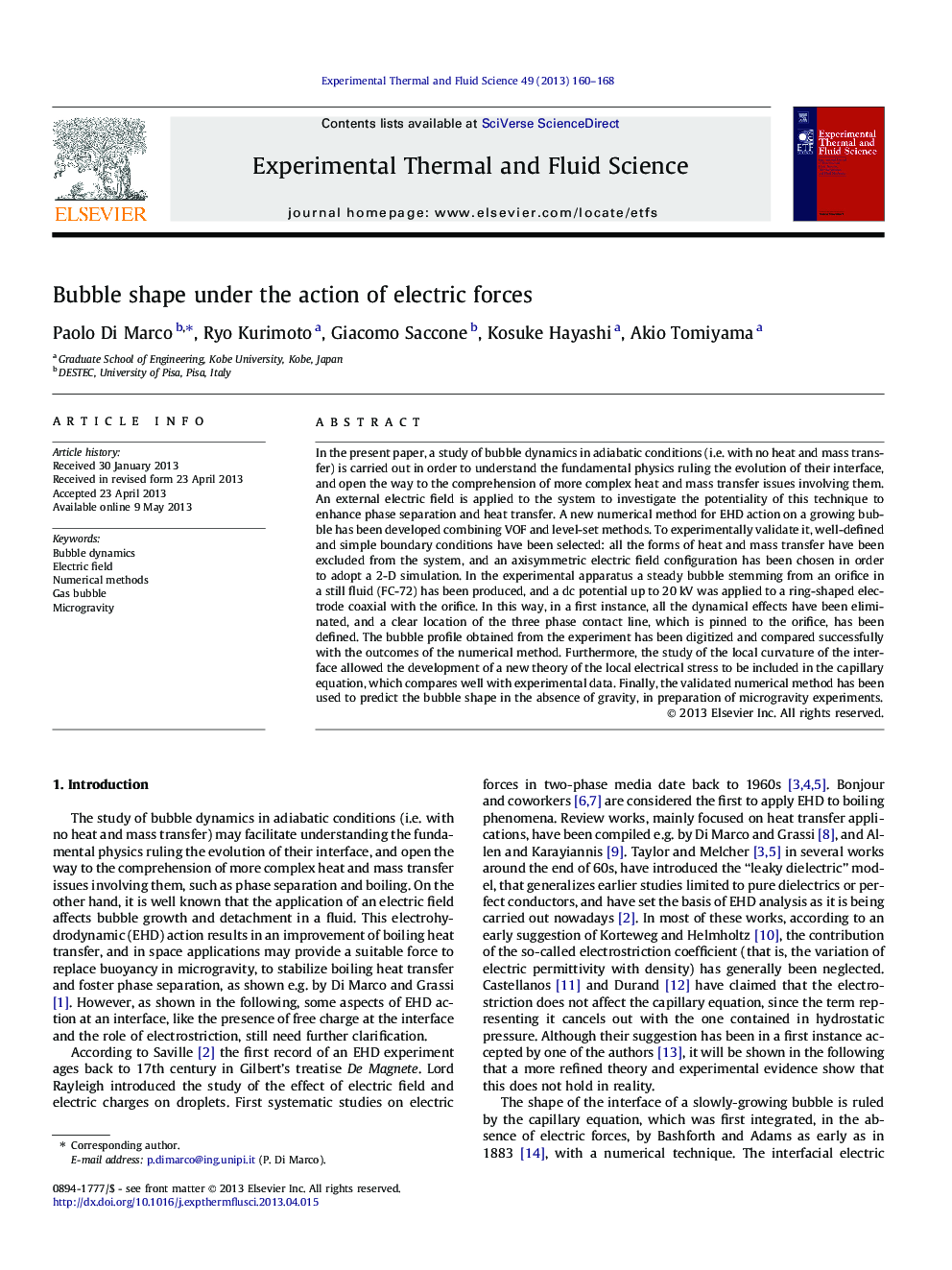| Article ID | Journal | Published Year | Pages | File Type |
|---|---|---|---|---|
| 651647 | Experimental Thermal and Fluid Science | 2013 | 9 Pages |
•Bubble dynamics in adiabatic conditions is studied.•A new numerical method for EHD action on a growing bubble has been developed combining VOF and level-set methods.•The bubble profile obtained from the experiments has been digitized and compared successfully with the model.•The study of the local curvature of the interface allowed the development of a new theory of the local electrical stress.•The validated numerical model has been used to predict the bubble shape in the absence of gravity.
In the present paper, a study of bubble dynamics in adiabatic conditions (i.e. with no heat and mass transfer) is carried out in order to understand the fundamental physics ruling the evolution of their interface, and open the way to the comprehension of more complex heat and mass transfer issues involving them. An external electric field is applied to the system to investigate the potentiality of this technique to enhance phase separation and heat transfer. A new numerical method for EHD action on a growing bubble has been developed combining VOF and level-set methods. To experimentally validate it, well-defined and simple boundary conditions have been selected: all the forms of heat and mass transfer have been excluded from the system, and an axisymmetric electric field configuration has been chosen in order to adopt a 2-D simulation. In the experimental apparatus a steady bubble stemming from an orifice in a still fluid (FC-72) has been produced, and a dc potential up to 20 kV was applied to a ring-shaped electrode coaxial with the orifice. In this way, in a first instance, all the dynamical effects have been eliminated, and a clear location of the three phase contact line, which is pinned to the orifice, has been defined. The bubble profile obtained from the experiment has been digitized and compared successfully with the outcomes of the numerical method. Furthermore, the study of the local curvature of the interface allowed the development of a new theory of the local electrical stress to be included in the capillary equation, which compares well with experimental data. Finally, the validated numerical method has been used to predict the bubble shape in the absence of gravity, in preparation of microgravity experiments.
